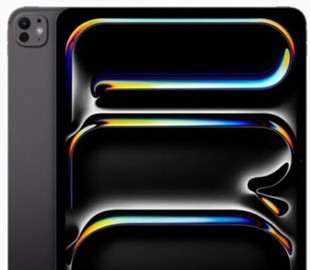
At the beginning of this year, I bought the new MacBook Air. It was an entry-level 13-inch model with an octa-core GPU. If my budget allowed, I would happily go for the more expensive version of the M3 with a 10-core GPU inside.
By spending a few hundred dollars on a higher RAM and storage configuration, you automatically get a more powerful M3 variant. Conversely, you can't just pay more for a version of the M3 with a more powerful GPU. If you want maximum performance, you'll have to pay for models with more memory/RAM. This is an unpleasant and very expensive situation, but it is already arranged by Apple.
Unfortunately, this condition has become a reality for iPad Pro in 2024. Apple didn't go into detail about that caveat during its fancy presentation, but the spec sheet gives a glimpse of the unsightly deal that will be hitting buyers in a week.
There's more to M4 than you think
With the iPad Pro, Apple is changing things up, but the overall theme remains the same. For the first time, the M series silicon in the iPad Pro will be available in two variants. The initial version is equipped with nine processor cores, and the top version – 10.
The numerical difference is small, but do not forget that it is about one performance core, not efficiency. The performance core does the heavy lifting in demanding tasks, and the difference between the two will certainly be felt in creative tasks.
Ideally, you want an iPad Pro M4 with a 10-core configuration, but you'll have to spend a lot more. It seems that there is no middle ground here, because everything depends on RAM and storage. Only the 1TB and 2TB models (which have 16GB of RAM) come with a 10-core processor. The 256 and 512 GB models are limited to a nine-core processor and 8 GB of RAM.
Imagine spending $1,199 on a tablet only to get 8GB of RAM and a subpar processor. And that's just the 11-inch version we're talking about. If your creative work requires a larger screen, even $1,499 only gets you 8GB of RAM and a nine-core version of the M4 processor.
To get the most out of M4 silicon, the minimum tariff – 1 TB of memory. This means that for the 11-inch iPad Pro (1TB), you'll have to pay at least $1,599 to get the 10-core M4 processor and 16GB of RAM. For the 13-inch model, the minimum price rises to $1,899.
Additional costs continue to rise.
I've been using the iPad Pro with the M1 chip for a few years now, and I still can't figure out how to unlock its potential on a regular basis. That's a great price for a thousand dollars, which isn't a big deal in an era where flagship phones cost more. Looking back, it's safe to say that the tablet will work as it should in the coming years.
That's the kind of warranty I want from a device I spent over a thousand on. If I picked up the iPad Pro M4 with the keyboard, my bill would be $1,500, but I still wouldn't be getting the best M4 processor Apple has to offer. And this is in addition to additional costs for cellular communication.
That's an exorbitant amount to spend on a tablet. I'm not going to make a Mac comparison here and say that a MacBook Air would be a fantastic buy at this price. But it's an iPadOS-powered tablet with incredibly few Pro apps needed for a full-fledged workhorse.
Yes, Final Cut Pro, Procreate, Logic Pro and DaVinci Resolve are available on iPad Pro. But, again, these are not full-fledged alternatives to desktop computers. Moreover, there are too few programs of this level to really elevate iPadOS. If you're incredibly lucky and find a job where you don't need Windows or MacOS at all, then good luck.
But even for such lucky ones, getting the most out of the M4 iPad Pro – the most expensive pleasure. For those who work on the go, cellular communication is practically indispensable. Apple will make you pay up to $200 for the cellular version of the iPad Pro 2024.
But whether or not Apple sees the iPad Pro as a laptop replacement, you won't be able to truly use the aforementioned “professional” applications without a keyboard. I'm not sure I could use DaVinci Resolve or Final Cut Pro without a keyboard and rely solely on touch controls when editing video. If you buy the iPad Pro with the new Magic Keyboard (and you should), you'll pay another $349.
This is not the best option
This year's iPad Pro has a minimum price of $999, compared to the base price of $799 that the iPad Pro M2 had. Yes, a faster chip and an OLED display combined with a thinner body deserve a higher price. But not every change increases cost.
Many iPad Pro users are already complaining about the frame bending. If the case becomes thinner by 5.3 millimeters, it will not benefit the iPad Pro. The OLED display is nice to look at, but how much can it improve performance – the question is controversial. A faster chip? Well, it's 50% faster than the M2, but only in certain tasks.
Apple claims that M4 brings “hardware acceleration of ray tracing” to iPad for the first time. But there are barely a dozen AAA iPad games out there right now, and I'm saying that very generously, that can take advantage of ray tracing.
Of course, the capabilities of the Neural Engine deserve attention, but why divide the M4 by memory configurations with only one core and ask for a few hundred dollars more for the upgrade? Maybe it makes sense to a computer. But for a tablet running a stretched mobile OS, Apple's new chip and storage policy – just a bad precedent.

